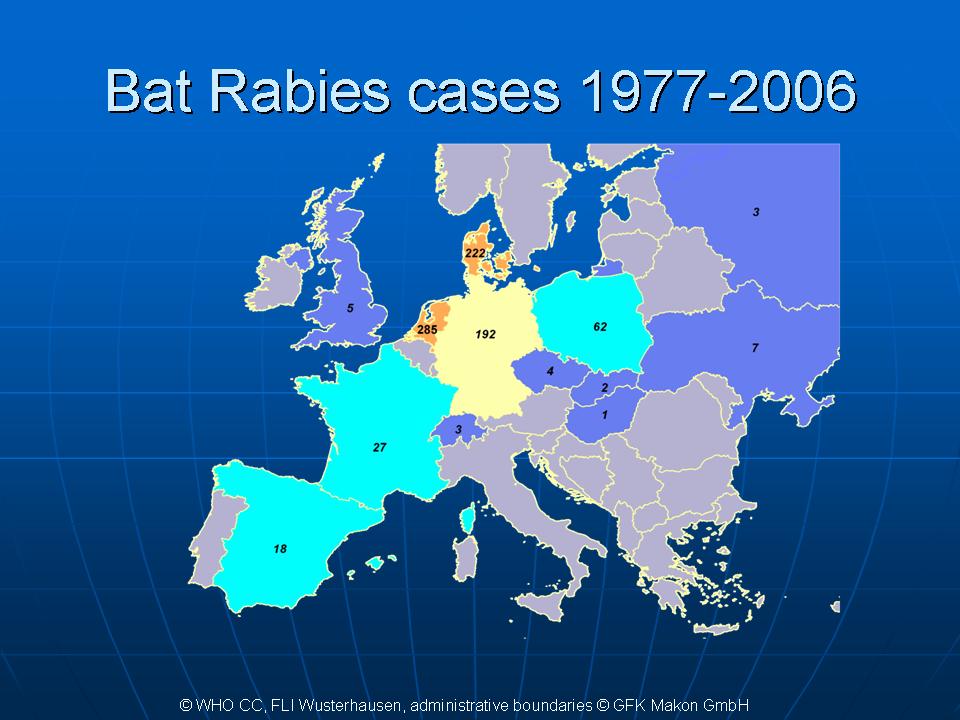From 1977 to 2006, a total of 831 cases of bat rabies were detected in Europe and reported to the WHO Collaborating Centre for Rabies Surveillance and Research at the Friedrich-Loeffler-Institute, Germany. The majority of positive bats originated from Denmark, followed by the Netherlands, Germany and Poland counting for more than 90 percent of all positive bats recorded for this time period. Bat rabies was also reported from France, Spain, Switzerland, Great Britain, the Czech Republic, Slovakia, Hungary, the Ukraine and Russia. Due to sampling bias it is in all probability that bat rabies occurs all over Europe. European bat lyssavirus type 1 (EBLV-1) has a specific association with the serotine bat (Eptesicus serotinus) while EBLV2 virus is more commonly associated with the species of Myotis bats (M. daubentonii and M. dascyneme) and has been isolated from bats in the Netherlands, United Kingdom and Switzerland in recent years.

Spill-Over from bat rabies in Europe
The transmission of bat rabies to terrestrial mammals („spillover ») is a rare incident. In 1998 and in 2002 EBLV1-induced rabies was detected in sheep in Denmark. The first spill over to wildlife species was confirmed in 2001 when in Germany a stone marten was tested EBLV1 positive. So far, a spill over of EBLV2 into animals has not been reported.
Human cases
Even though the risk of possible exposure to bat lyssaviruses is low, sporadic human rabies cases following a bat bite have been described. In 1977 the first confirmed case of EBLV 1 associated with a bat bite in Europe was reported in the Ukraine. A further case of a fatal EBLV 1 infection in humans occurred in 1985 in Russia. A Swiss biologist who had multiple bat bites died in Finland in 1985. Rabies as a diagnosis was confirmed by laboratory and EBLV 2 was isolated for the first time. The second confirmed case of an EBLV 2 infection following exposure to bats was a 56-year-old bat conservationist from Angus, Scotland who died in November 2002. A further case of bat associated rabies was reported in the Ukraine, although not confirmed by laboratory.